Sidewalks should be designed for people, not cars
The reconstruction of a Toronto street highlights the problem with "standards."
The City of Toronto recently reconstructed the street where my daughter lives, including the installation of new sidewalks. Being close to a major railway line, it used to be a working-class neighbourhood of narrow lots and small houses. Nothing is working-class anymore, and the paved front yards are full of fancy pickup trucks and SUVs. Combine narrow houses and lots of parking, and you get lots of driveways and curb cuts- so many that there seem to be more driveway entrances than sidewalks.
Like everything with road design, there is a standard that is supposed to be met. The standard is designed by engineers and is adopted by the jurisdiction. Charles Marohn used to be an engineer and describes how engineers think in Strong Towns:
“When engineers design streets, they start the process using the values of the engineering profession. The engineer doesn’t stop to consider that their values might be questioned by others — that their core values might, in fact, be rejected by most of society.”
Engineers develop standards to protect the public but also to protect the client and themselves. If someone dies because a car can drive fast on wide streets and whip around corners with such big curve radii that they barely have to slow down, the client (the city) and the engineers can simply say, “It’s the standard.” And almost all the standards for road designs, which include the sidewalks, are designed for the benefit of the drivers of cars. That is the core value.
I was doing a morning run on the Somerset Ave. sidewalk shortly after it was completed and noticed how difficult it was with it going up and down like a roller coaster. My younger daughter said it was impossible to push the stroller on; she had to walk in the street. I thought this couldn’t be right, and looked at the standard:
The city standard describes a ramp of 460mm at the street with a maximum slope of 10%, and at the other side of the sidewalk, a minimum of 1100mm (3.6 feet) with a slope of 2-4%. That’s a little less than four feet of flat sidewalk.
The standard doesn’t address the fact that the street is full of paved yards, so it’s almost all driveway. Going by the book, if there is a little gap between the driveway then there is now a little bump, just to throw you off your balance.
It’s all the more noticeable on Somerset because the contractor didn’t actually build to the standard; I took a tape measure and a level and found that if there was a flat section at all, it was never more than 600mm (2 feet) and the ramp section, which was supposed to be maximum 460mm was much wider and much steeper, sometimes reaching 14%.
And why is the standard like this? For the convenience of cars. If they drive too fast up a steep curb cut, they might bottom out and damage something. A few years ago, Steven Toth wrote about this in Raise the Hammer, complaining to the City of Hamilton about the "roller coaster effect along the length of the sidewalk. The design forces pedestrians to constantly change levels each time they encounter a driveway.” The engineer responded:
“It is not a question of the design or the standard it is a question of the ability to implement a feasible alternative that can accepted by all user groups on the street. Those that must park on the street because they have no driveway, those that have a driveway and an expectation that they can use it without damaging the bottom of their car and the provision of separate protected facility (a sidewalk) for the pedestrian…. These all must be considered and not just dismissed in favour of the provision of unfettered absolute ultimate pedestrian consideration.”
So, the drivers get the road to drive on and to store their vehicles and pedestrians are not allowed there, but the pedestrians have to compromise and share the sidewalk to protect the poor little bottoms of the cars. Except they are all now SUVs and pickup trucks and probably don’t even need a curb cut.
Once I started seeing the problem, I couldn’t unsee it, and I look at sidewalks everywhere now. The “standard” causes problems for pedestrians everywhere; on another street nearby, the cars are too big for the driveway and hang out over the only flat part of the sidewalk. Last night, walking in the freezing rain, I danced around every curb cut, certain I would fall if I didn’t. Looking back at one of the early posts on this Substack, How Dangerous Design in our cities and homes is killing our olders, I noticed a comment from Catherine Nasmith:
“I have twice fallen on icy sloped sections of sidewalks from curb cuts and driveways. On a 5' sidewalk there is generally only a 2' section flat enough to be sure of, so often Bob and I are walking single file along it. I will be writing to the City to ask for a change in the detail, cars can climb a shorter ramp, and the bump would ensure that cars slow before crossing a sidewalk.”
Imagine Somerset Avenue in winter. All those paved driveways will dump water onto these sidewalks- eavestroughs drain onto front yards, and there is nowhere for the water to go. All those bumps in the sidewalks are going to create little rivers to freeze.
And all of the lawyers at City Hall are not going to have a defence when the City gets sued because the sidewalk isn’t even built to the standard. But even when the sidewalk is built right, it’s wrong.
The standards have to change, and there are groups trying to change them. NACTO, the National Association of City Transportation Officials, has long pushed back against standards imposed from upstairs and demanded more urban-friendly designs. They say:
“Sidewalks play a vital role in city life. As conduits for pedestrian movement and access, they enhance connectivity and promote walking. As public spaces, sidewalks serve as the front steps to the city, activating streets socially and economically. Safe, accessible, and well-maintained sidewalks are a fundamental and necessary investment for cities, and have been found to enhance general public health and maximize social capital. Just as roadway expansions and improvements have historically enhanced travel for motorists, superior sidewalk design can encourage walking by making it more attractive.”
For this specific issue, they say, “At driveways, sidewalks should be maintained at-grade through the conflict zone.”
Sidewalks are for people who walk. People with walkers and strollers and who want to walk side by side instead of single file. Ramps for cars should be in the road, not the sidewalk, like they used to be. I will cherry-pick the words of that Hamilton engineer; walking people deserve “unfettered absolute ultimate pedestrian consideration.”
I have filed a letter with our local councillor, Alejandra Bravo; she’s on the case.
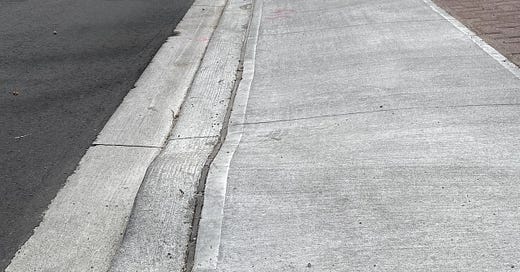



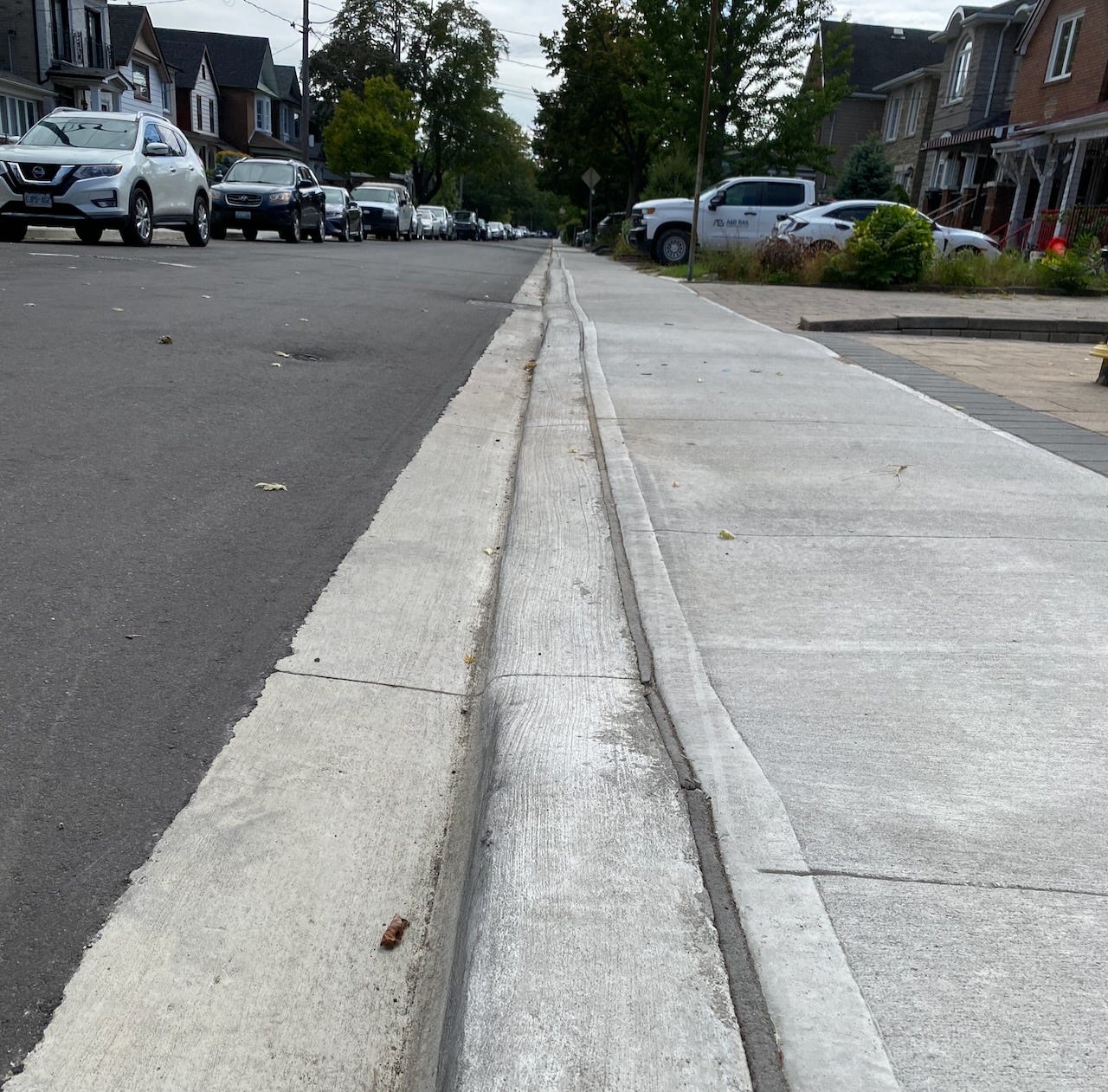
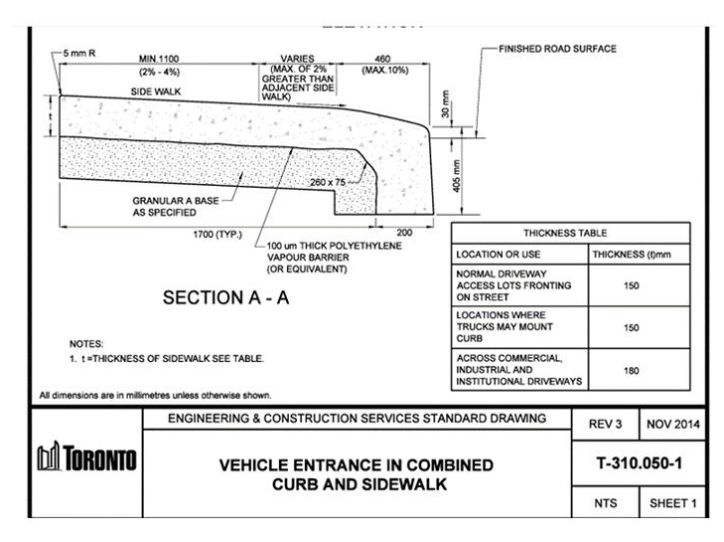


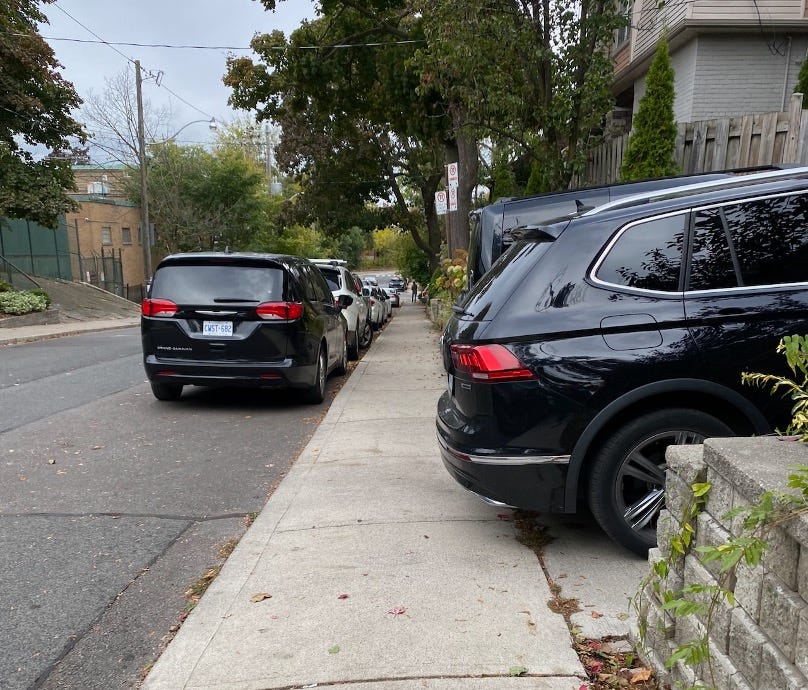
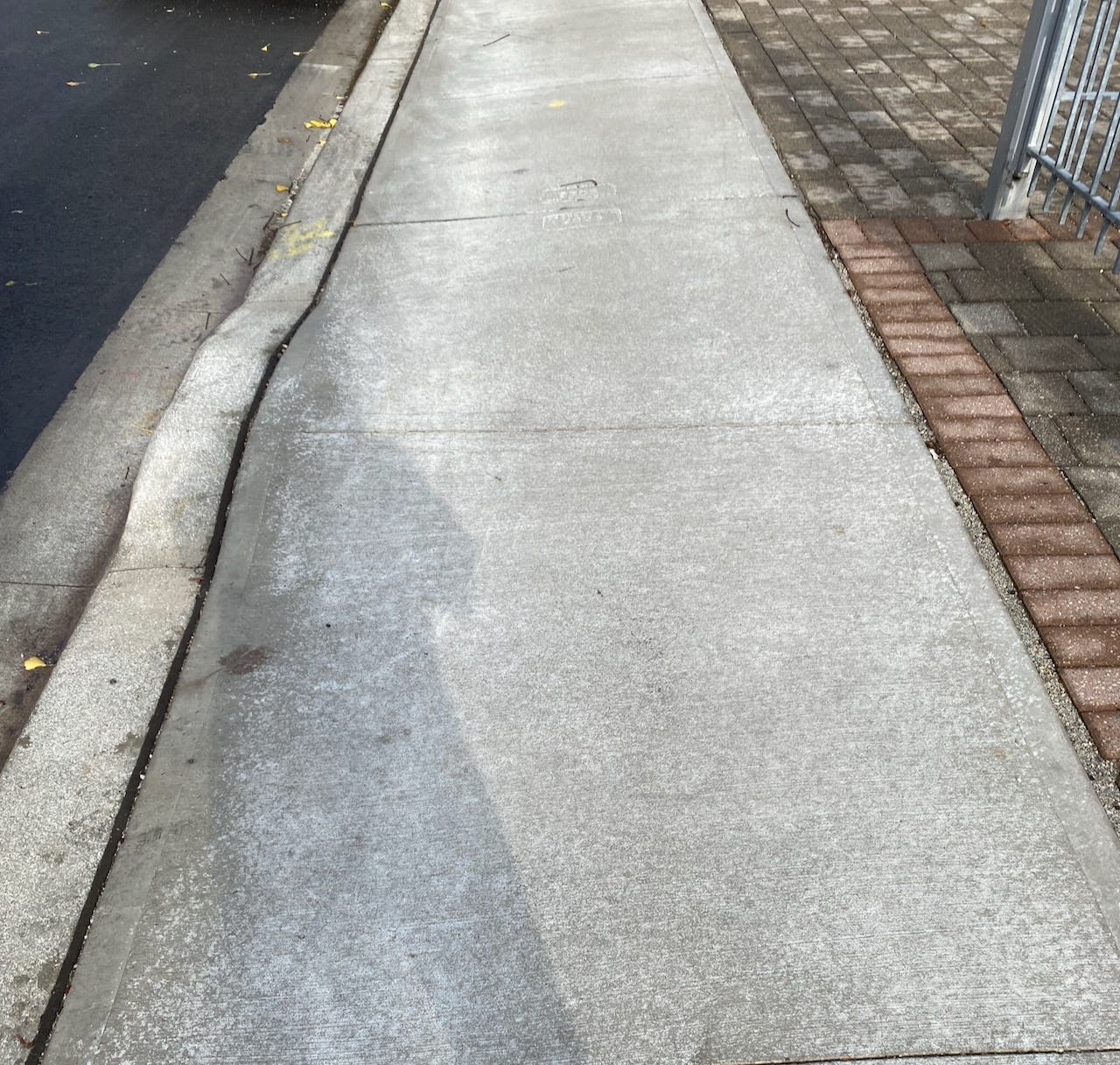
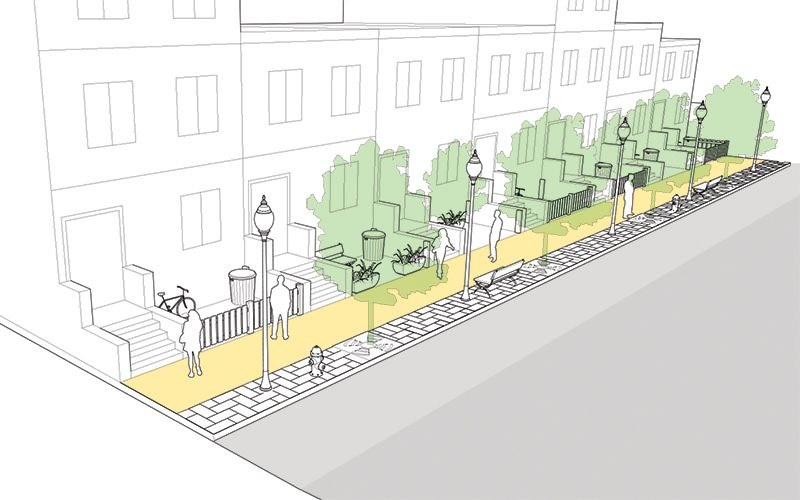
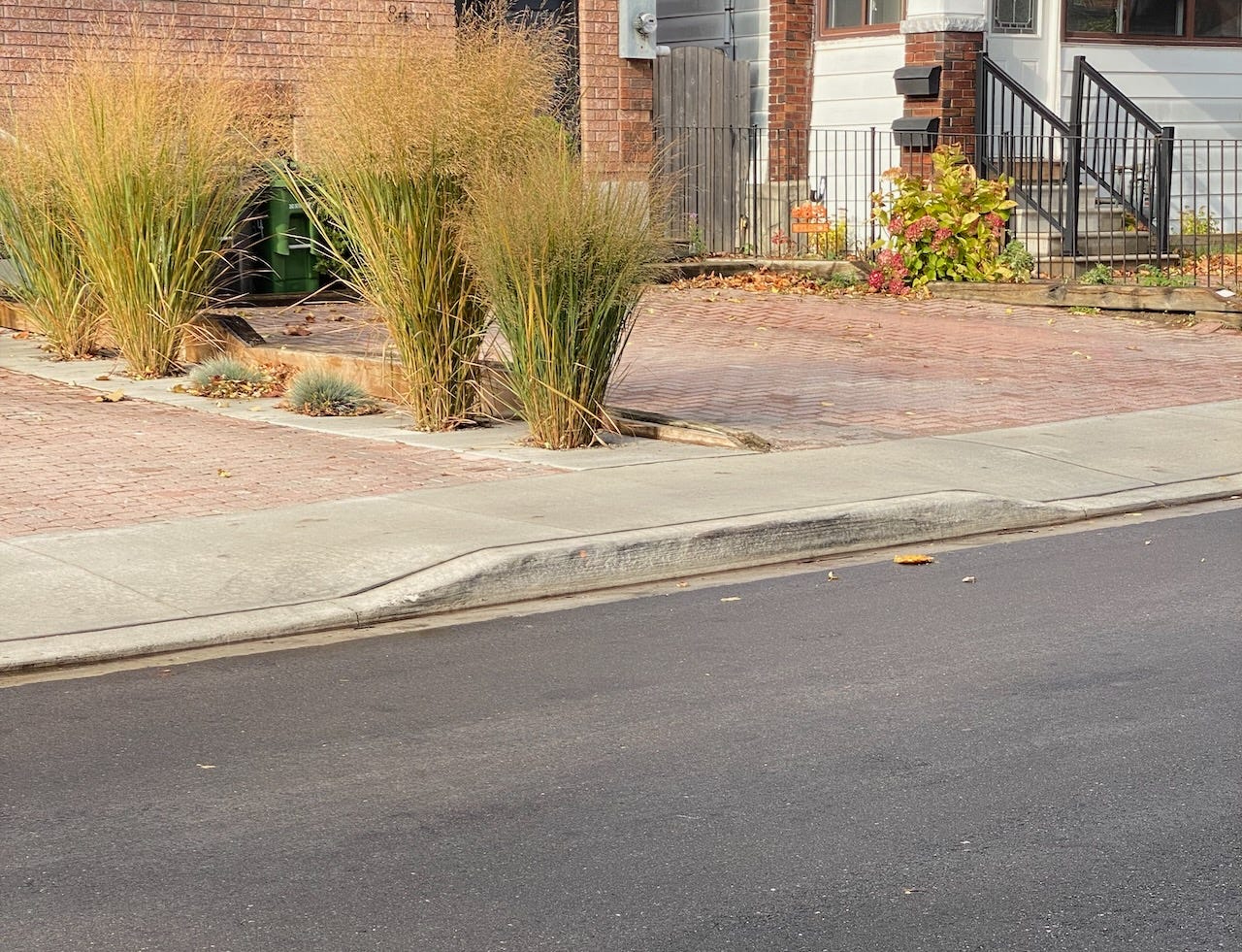
As a wheelchair user, sidewalks like this are just about impossible for me to use. This means I can barely get around some neighborhoods at all without at car. The assumption that the pedestrians can compromise is so ableist.
Unfortunately life isn't going to get easier for your daughter and grandchild. When your grandchild starts walking and for the first few months or year they don't raise their feet up very well when walking. So walking on a sidewalk like that is really impossible for a toddler. They keep tripping and falling. I don't remember how many times my kids fell and banged their forehead because of that damned unevenness!